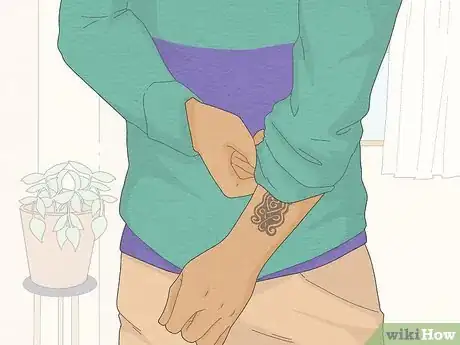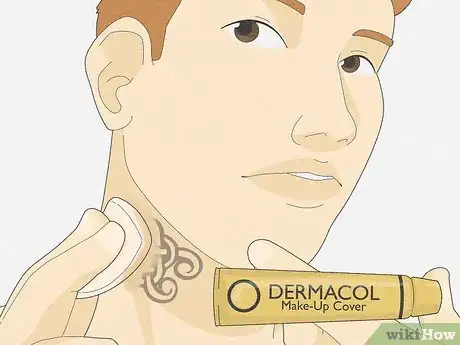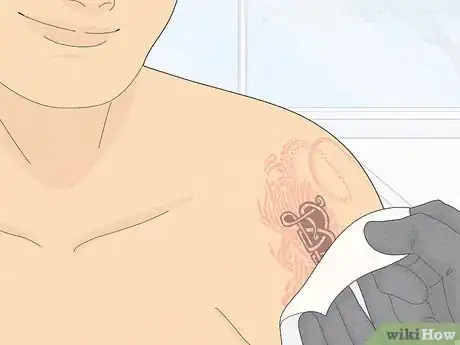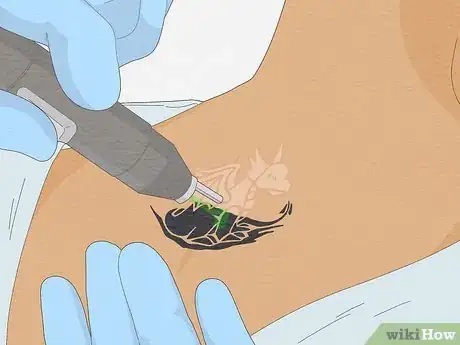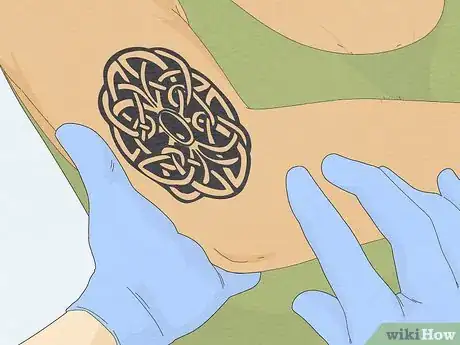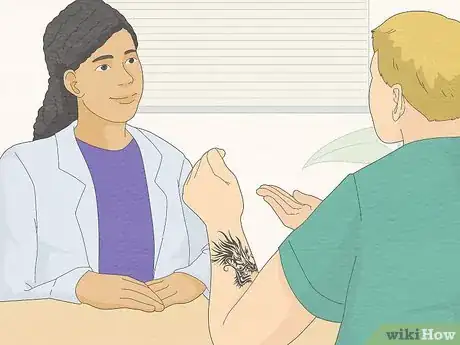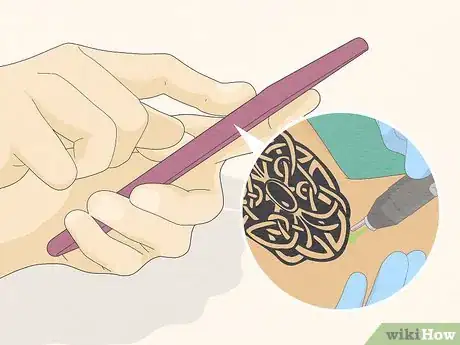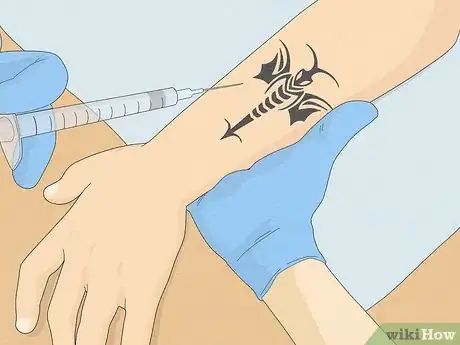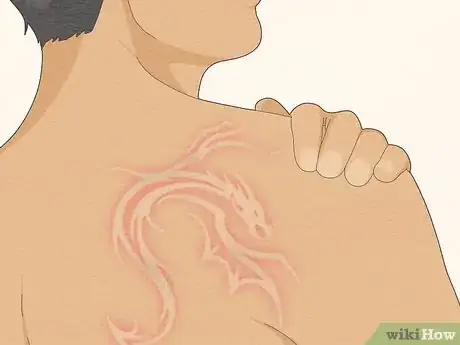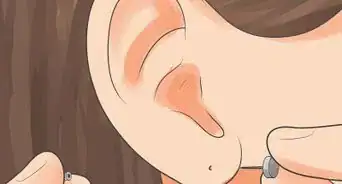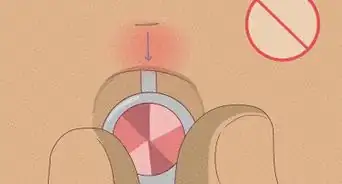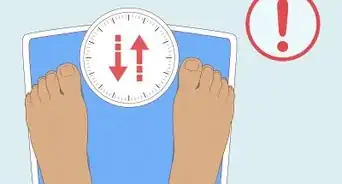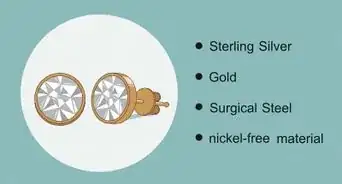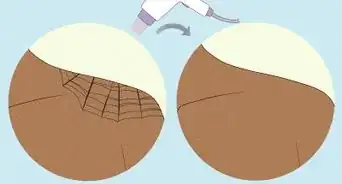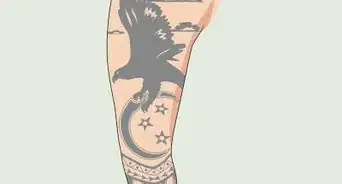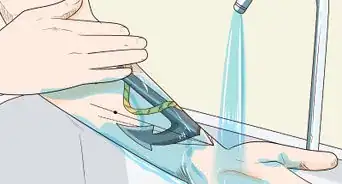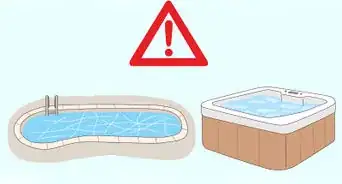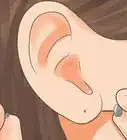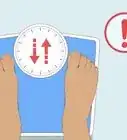This article was co-authored by Burak Moreno. Burak Moreno is a Professional Tattoo Artist with over 10 years of experience. Burak is based in New York City and is a tattoo artist for Fleur Noire Tattoo Parlour in Brooklyn. Born and raised in Istanbul, Turkey, he has worked as a tattoo artist throughout Europe. He works on many different styles but mostly does bold lines and strong color. You can find more of his tattoo designs on Instagram @burakmoreno.
This article has been viewed 120,738 times.
As tattoos grow in popularity, so too does the need to have them removed. While a quality tattoo can be a badge of pride, a poorly done tattoo or one that dredges up bad memories can become an unfortunate constant companion. Because tattoos are designed to be permanent, they aren’t easy to dislodge, but, with enough time, skill, and money, it is possible. If you don’t have the means to invest in permanent tattoo-removal, there are fortunately a few less costly work-arounds. Read on for more on removing and covering tattoos.
Steps
Disguising the Tattoo
-
1Wear clothing over it. If possible, wear clothing that will disguise the tattoo--long-sleeved shirts, jackets, pants, etc.
- If you’re not ready to go the more permanent (and costly) route of getting a cover-up tattoo or getting laser-removal done, using clothing to cover the tattoo is a relatively easy temporary measure.
- Flesh-colored tattoo-covering sleeves are available from online retailers, including sizes to cover the whole arm, lower or upper arm, wrist, and ankle.
-
2Disguise the tattoo with makeup. Find a heavy-coverage foundation that matches the tone of your skin near the tattoo.
- Certain makeup products are even designed specifically for covering tattoos and can be found online or at many beauty supply stores.
- Though also not ideal for the long-term, covering your tattoo with makeup can help you deal with it in the short-term.
Advertisement -
3Get a cover-up tattoo. Cover-ups typically involve covering the old tattoo with a new, larger one.
- Find a tattoo artist or shop that specializes in cover-ups and can show you a portfolio of quality work. If it wasn’t done right the last time, you want to make sure it will be this time.
- You’ll need a design that’s larger than the original tattoo--and sometimes significantly so.
- Work with your artist to create a design that will work with the features of the old one. Because it’s often hard to completely cover over a new tattoo, you’ll want a design that can integrate and then camouflage the old one.
- Most cover-up tattoos will be done in color in order to better cover the old one. Tribal-style tattoos tend to be the exception.
EXPERT TIPBurak Moreno is a Professional Tattoo Artist with over 10 years of experience. Burak is based in New York City and is a tattoo artist for Fleur Noire Tattoo Parlour in Brooklyn. Born and raised in Istanbul, Turkey, he has worked as a tattoo artist throughout Europe. He works on many different styles but mostly does bold lines and strong color. You can find more of his tattoo designs on Instagram @burakmoreno.Tattoo Artist
 Burak Moreno
Burak Moreno
Tattoo ArtistOur Expert Agrees: If you have a small or faded tattoo, you can get rid of it by getting a cover-up tattoo. If you need to cover a large or very dark tattoo, you might need 2-3 sessions of laser removal before you can cover it up with another design.
Getting Laser Removal
-
1Look into laser removal. Laser removal for tattoos is usually a lengthy and expensive process, and one that’s not guaranteed to work.[1]
- Depending on the location, type of ink, and depth of the tattoo, it may not be possible to remove it completely.
-
2Determine if you’re a good candidate. Laser removal won’t work for everyone, so be sure you’re a good candidate before you sign on. Set up a consultation before committing.
-
3Research reputable dermatologists. Make sure that the person who would be performing the removal has an established track record of strong work with minimal side effects.[4]
- Ask your family doctor or dermatologist to refer you to someone who specializes in tattoo removal and whose work they know and trust.
-
4Research the technology. Be sure to research exactly what a laser treatment does before committing to laser removal.
- Laser treatments use pulsed Q-switched lasers to break the ink particles apart so they can be absorbed by the body’s immune system. Once the ink particles have been broken up, they’ll go to the lymph nodes, where they’ll remain.
- It generally takes between 5-10 treatments over a span of many weeks to remove a tattoo. Costs vary, but on average will run about $200 per session. Most insurance companies won’t cover the cost of tattoo removal unless it’s medically necessary.[5]
-
5Understand the procedure. Be sure you know not only what the technology is, but what the actual procedure will be so there won’t be any unfortunate surprises after you’ve committed to it.
- In general, a laser tattoo removal session will run as follows:[6]
- You’ll be given protective eye shields, and the doctor may administer either topical anesthesia or painkiller injections before beginning.
- The doctor will use hand-held device will up against your skin to direct the laser. You can expect each pulse of the laser to feel something like being snapped with a rubber band or spattered with hot grease.
- After the laser has been applied to the entire area, the doctor will likely apply ice or a cold compress before covering the area with a bandage.
- The doctor may give then you a topical cream to apply periodically to the site.
-
6Know the potential side effects. Though laser removal is generally a safe procedure, there are certain risks for side effects, including[7]
- Infection: If not treated properly, the tattoo site can be subject to infection.
- Scarring: There is a small chance that the treatment could leave you with permanent scarring.
- Hypo- or hyperpigmentation: There’s a risk that the skin in the treated area will either become lighter or darker than the surrounding skin.
References
- ↑ http://www.ctvnews.ca/laser-treatment-not-quick-fix-for-bad-tattoos-1.416102
- ↑ http://www.webmd.com/skin-problems-and-treatments/laser-tattoo-removal
- ↑ http://www.webmd.com/skin-problems-and-treatments/laser-tattoo-removal
- ↑ http://www.webmd.com/skin-problems-and-treatments/laser-tattoo-removal
- ↑ http://www.webmd.com/skin-problems-and-treatments/laser-tattoo-removal?page=3
- ↑ http://www.webmd.com/skin-problems-and-treatments/laser-tattoo-removal
- ↑ http://www.webmd.com/skin-problems-and-treatments/laser-tattoo-removal
- ↑ http://www.ctvnews.ca/laser-treatment-not-quick-fix-for-bad-tattoos-1.416102
